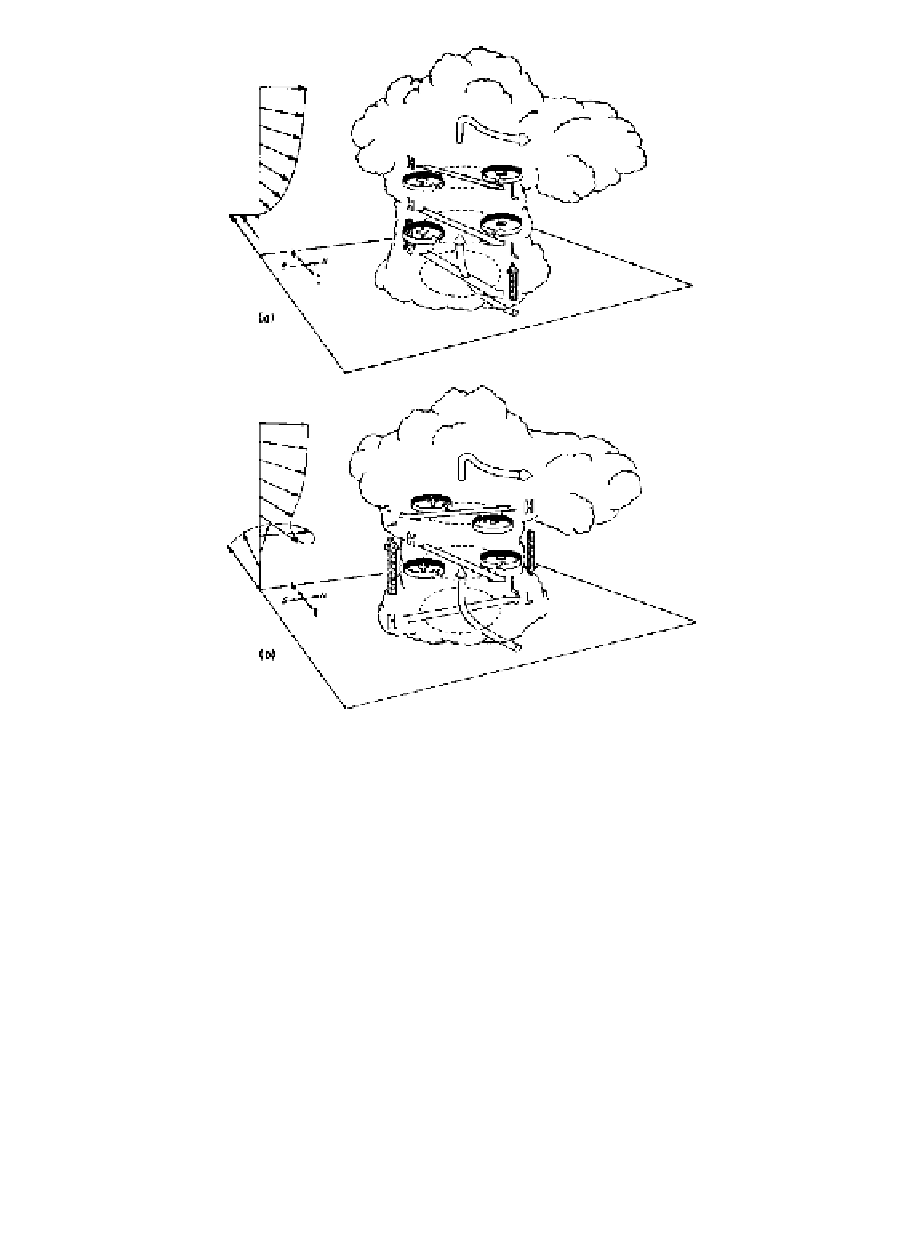Geography Reference
In-Depth Information
Fig. 9.13
Pressure and vertical vorticity perturbations produced by interaction of the updraft with
environmental wind shear in a supercell storm. (a) Wind shear does not change direction with
height. (b) Wind shear turns clockwise with height. Broad open arrows designate the shear
vectors. H and L designate high and low dynamical pressure perturbations, respectively.
Shaded arrows show resulting disturbance vertical pressure gradients. (After Klemp, 1987.)
moving) updraft cores are equally favored. In most severe storms in the central
United States, however, the mean flow turns anticyclonically with height; this
directional shear in the environment favors the right-moving storm center, while
inhibiting the left-moving center. Thus, right-moving storms are observed far more
than left-moving storms.
The dominance of the right-moving storm can be understood qualitatively by
again considering
th
e dy
na
mical pressure perturbations. We define the basic state
wind shear vector
S
∂
V
∂z , which is assumed to turn clockwise with height.
≡

